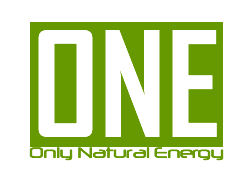 The Energy Department’s National Renewable Energy Laboratory has announced the demonstration of a 45.7 percent conversion efficiency for a four-junction solar cell at 234 suns concentration. This achievement represents one of the highest photovoltaic research cell efficienciesJPG achieved across all types of solar cells.
The Energy Department’s National Renewable Energy Laboratory has announced the demonstration of a 45.7 percent conversion efficiency for a four-junction solar cell at 234 suns concentration. This achievement represents one of the highest photovoltaic research cell efficienciesJPG achieved across all types of solar cells.
NREL’s new solar cell, which is designed for operation in a concentrator photovoltaic (CPV) system where it can receive more than 1,000 suns of concentrated sunlight, greatly improves earlier designs by incorporating an additional high quality absorber layer to achieve an ultra-high efficiency.
Multijunction solar cells harvest sunlight by dividing the solar spectrum into portions that are absorbed by a material with a bandgap tuned to a specific wavelength range. Combining materials with optimal bandgaps is critical for high efficiency. The challenge is to maintain the high quality of the materials while integrating them into a complex cell capable of efficient photoconversion.
“The distinction of this multijunction device is the very high quality of the lattice-mismatched subcells,” said NREL Scientist Ryan France, designer of the solar cell. “Lattice-mismatched materials require the introduction of defects, called dislocations, into the device, which can drastically hinder device performance. NREL has learned to control and confine these dislocations to inactive regions of the device, allowing even highly mismatched material to be used in a multijunction cell.”
NREL invented and developed the advanced four-junction inverted metamorphic (4J IMM) cell with these challenges in mind. The new design consists of a gallium indium phosphide (GaInP) junction, a gallium arsenide junction, and two gallium indium arsenide junctions that are lattice-mismatched to the substrate. The cell’s peak efficiency of 45.7 ± 2.3 percent was measured under the AM1.5 direct spectrum at 234 suns concentration, but the device performs nearly as well at even higher concentrations, having 45.2 percent efficiency at 700 suns concentration.
The device has numerous other improvements over previous designs, including a broadband four-layer anti-reflection coating, a novel metamorphic tunnel junction interconnect, and unprecedented performance from the GaInP top cell. Compared to standard GaInP subcells, this subcell has both higher voltage and reduced series resistance, which is essential for high efficiency at high solar concentrations.
The cell measurements lab at NREL validated the efficiency. Notably, the measurements at high concentration were taken with a new flash simulator-a Tunable High Intensity Pulsed Solar Simulator (T-HIPSS)-that more accurately controls the spectrum of the concentrated light. This tool ensures that each junction of the device receives an amount of light representative of the solar spectrum, and greatly reduces the error of measurement. The cell is being sent to an external accredited laboratory for further testing and confirmation.
This body of work is supported by the Energy Department’s SunShot Initiative, which is a national effort to make solar energy cost-competitive with traditional energy sources by the end of the decade. Through SunShot, the Energy Department supports private companies, universities, and national laboratories working to drive down the cost of solar electricity to $0.06 per kilowatt-hour. Learn more at energy.gov/sunshot.
NREL is the U.S. Department of Energy’s primary national laboratory for renewable energy and energy efficiency research and development. NREL is operated for the Energy Department by The Alliance for Sustainable Energy, LLC.
Originally published in the NREL
December 16, 2014


Be the first to comment on "NREL Demonstrates 45.7% Efficiency for Concentrator Solar Cell"